Smartphone refraction
Category : NoneRefraction simulation and more generally transparency on smartphone is a rather expensive luxury. However, thanks to Shader Graph, it is possible to quickly prototype a shader which allows this at a lower cost. This is what I tried to produce on this test.
A parametric triplanar noise is used for the deformation of the vertices, but also the normal map, as well as the deformation of the background video texture. This texture is then applied to the object on its emission channel and its albedo with a bit of Fresnel. The result is far from being a true refraction of course, but for the smartphone, and given the few resources that this requires, it works pretty good.
I am using this shader in a production being finalized in augmented reality which will not fail to appear very soon here.
Unity 3d 2019 (C#) + URP + Shader Graph 0.7
Honey pearls
client : Vivapi https://vivapi.com/ Category : GraphicsFor a series of honey candies (of excellent quality), Vivapi asked me to produce promotional images for its website mainly. Since it was necessary to produce strictly identical images from one perfume to another, CGI has proved to be the ideal tool for this task. The render has been produced with Maxwell Render. A studio HDR lighting has been recreated in order to emphasis the volumes.
The images were rendered with Maxwell for the most realistic result possible (28 in total). The texture of the candies has been reproduced most faithfully to the originals. The candies shapes were modeled by photogrammetry and retouched under ZBrush. The pot was modeled using CAD tools from plan to obtain the exact virtual replica.
I invite you to taste these sweets, they are all more delicious than others!
Packaging Apiland
client : Apiland Category : GraphicsVideo game techniques applied to the making of an original packaging. The box was made to contain 4 containers (filled with cookies, honey, candies...). The design of the cardboard beehive was developed by Lionel Rolland from Apiland (registered design). I was charged to create the texture. For that, the beehive was modeled in 3d. A render for texture baking was done under a rather diffuse lighting. I've used the different passes (lighting, shadows, ambiant occlusion, global illumination) to complement the base wood texture. The render is realistic and gives a pretty volume to the product.
Cup of tea
Category : GraphicsA little rendering training of a cup of tea. the spoon has been modeled with Zbrush, the rest with 3d Studio max. The rendering has been done with Arion. Although the logic of materials is very close to that of Maxwell render, the texture of sugars was difficult to obtain (by SSS mainly). I wanted to also test the quality of the displacement from Arion (engravings on the spoon). I have to say that the result is quite interesting, but relatively slow computing. Gain memory is however significant compared to the full poly model (which is primary for GPU rendering).
Spiderman Vray
Category : GraphicsA work in progress. The original texture was made for Mental ray. So i've reproducted it almost identical for Vray. This allows me to use it on both rendering engine as needed. Some uvw defects persists. They will be fixed.
Spiderman Mental ray
Category : GraphicsA Zbrush 4 character modeling. It's a work in progress... The texture has been entirely made from scratch (a lot of mapping layers) - mental ray texture base.
Chrome ring on draped fabric
Category : GraphicsRendering test with the Maxwell render engine. Very good unbiased renderer, although, v1.5 seems to be a bit lazy

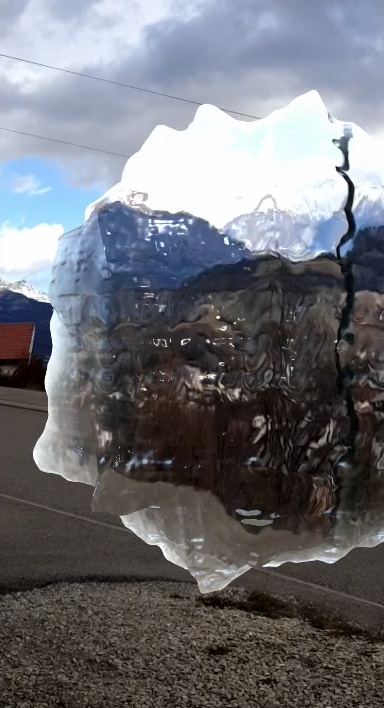
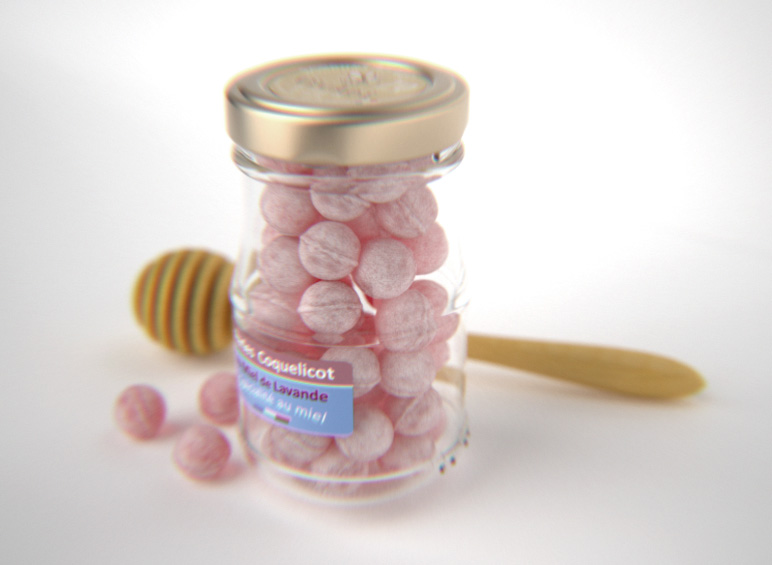
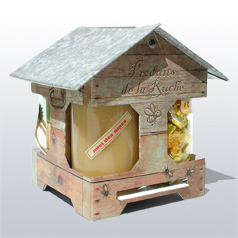
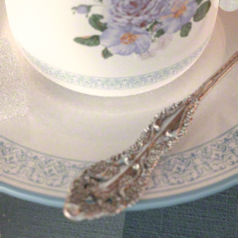
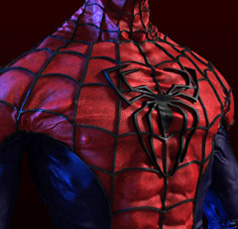
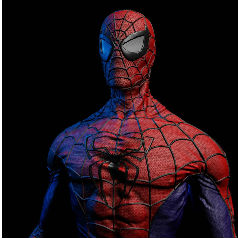
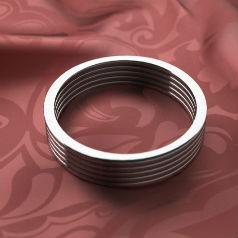

 version française
version française